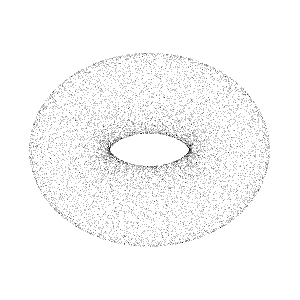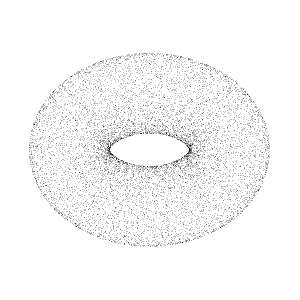
Point-cloud modeling is typically used in the process of 3D scanning objects.
Rather than defining surfaces through mathematical formulas, or building them out of rudimentary shapes like triangles -- point cloud modeling creates a representation of a 3D object with densely placed vertices -- or “points” -- along its surface.
With a high enough resolution and point-density, point-cloud models can accurately represent the features of virtually any 3D object. In fact, point-cloud 3D scanning has been used to create 3D representations of highly complex objects like human faces.
Beyond scanning objects, point cloud data has a wealth of applications in simulation.
Point-clouds can be used to represent solid objects in a Finite Element Analysis context -- boiling down mathematically complex CAD surfaces into a relatively finite number of points. This allows engineers and scientists to simulate objects under stress, simulate deformation, etc.
| ADVANTAGES | DISADVANTAGES |
|
|
|
|
|
Ultimately, point-cloud modeling alone doesn’t have a lot of applications. 3D Scanned objects need to be converted to another type of model to be truly useful. In conjunction with other modeling types, however, point-cloud can be incredibly useful. It can be used with BRep to simulate stresses on engineered models. It can be used with polygonal modeling to create complicated 3D models of scanned objects.
THE PROCESS OF HYBRID MODELING
Simply put, hybrid modeling combines the benefits of BRep, polygonal, point-cloud, and voxel-based modeling -- the four main types of 3D modeling -- into one workflow.
Software development kits like Spatial’s CGM allow 3D developers to build hybrid-modeling features natively into their toolset. This allows designers and engineers to seamlessly hop back-and-forth between modeling types without losing any data in the process. It allows engineers to run any simulation on their BRep files, and take those insights back to automatically tweak their models.
Powerful hybrid modeling software means you can shorten the process of model preparation and fill in the gaps that are typical of 3D models -- like simulating the behaviour of engineered models on a particle-basis.




















